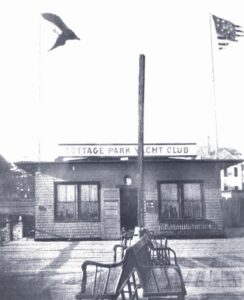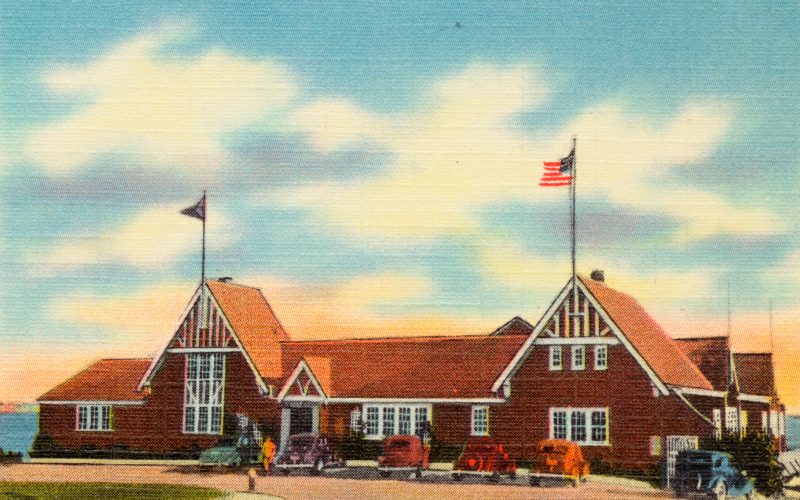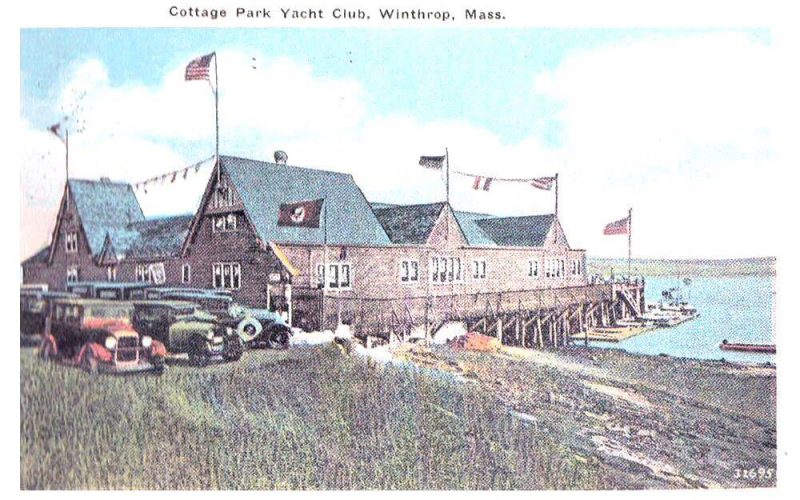In 1902, the Boston Steam Ship Company announced it would cease operations of its ferry service from Boston to the Cottage Park Hotel in Winthrop. Being a coastal community that borders Boston Harbor and its islands, a group of local businessmen met at the hotel to explore the possibility of purchasing the ferry dock to start a yacht club. They formed a corporation and named it Cottage Park Yacht Club, receiving a charter from the Commonwealth of Massachusetts.

The first order of business was to purchase the head pier and ticket office to be used as the clubhouse. Arthur T. Bliss was elected to serve as the Cottage Park Yacht Club’s first Commodore. Their avowed purposes were to make the members more proficient in the science of navigation and all matters pertaining to yachting and to provide for their social welfare. The number of trophies, awards, and plaques amassed by the membership attests that they succeeded in their aims.
With a rapidly growing membership, it soon became evident the clubhouse was too small for the needs of the membership. Plans were approved for a new clubhouse to include bowling alleys, a billiard room and a dance hall on the second floor. The new clubhouse opened in 1908, and is pictured in Fig 1. Unfortunately, this clubhouse was destroyed by fire in 1926. The membership rose to the occasion and commissioned a new clubhouse to be built, and was able to secure a temporary home during construction at the Sproule estate on Sunnyside Avenue. In 1928, the new clubhouse was opened and is essentially what we have today, pictured in Fig. 2.
Although the club was strictly stag in the beginning with its stag parties, smokers, billiards, and bowling, women were welcome once a month. Times have changed as we now welcome women to a full partnership. During the height of the 1978 blizzard, a wave crashed through the plate glass window and the pilot house actually collapsed into the bay. The pilot house was replaced and back in business before the summer boating season.

The no name storm in October of 1984 caused extensive damage to the head pier, and the marina was almost completely destroyed. Weekend work parties were established, and the membership over the course of the winter and spring replaced the marina. The head pier was replaced in 1986.
The membership consists of approximately four hundred people with varied interests in bowling, billiards, darts, social activities, power boating, sailing, and youth sailing. The clubhouse is open year-round and has men, women, and couples’ bowling leagues. The entertainment committee plans one social event per month, highlighted by the commodore’s ball and the blessing of the fleet.
The boating membership is a good mix of power boaters and sailors. The fleet captain schedules day trips and picnics to the Boston Harbor islands during the season. Each year, the Cottage Park Yacht Club pursues an aggressive racing schedule for sailors. Over the years, we have hosted many championship yacht racing regattas, culminating with the World Star Class Championship.
The active racing fleets consist of PHRF ocean racing, Star Class, and Rhodes 19. Over the winter months, we have a very active frostbite fleet who sail in lasers and interclubs on weekends. The club sponsors a first class youth sailing program, in which many children of members participate. They have full-time instruction all summer, and an active parents’ group, which oversees the program. They sail in N10s, optimists and 420s and go to class sponsored regattas to compete against youth sailors from other clubs in their age group. Over the years they have won an impressive number of championships, and many have gone on to distinguish themselves at the college and national level.




